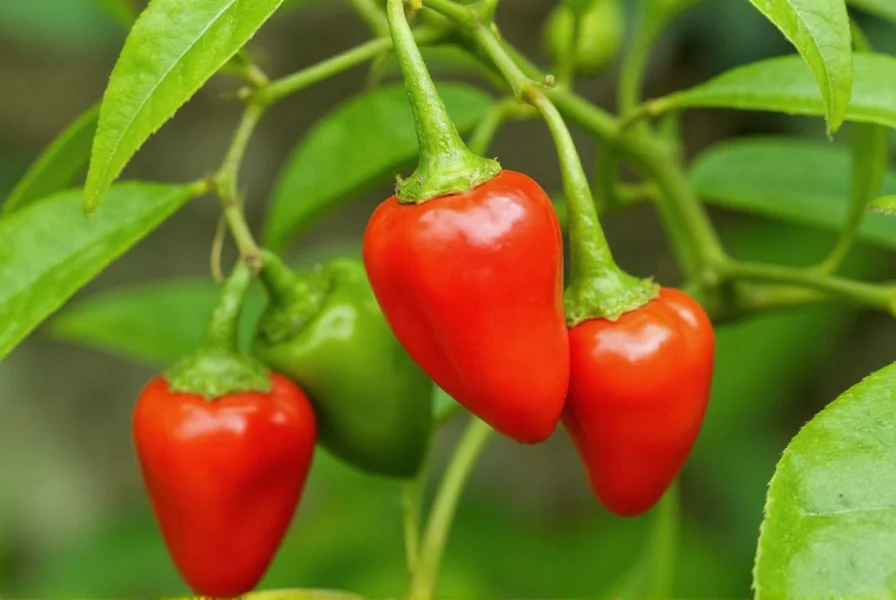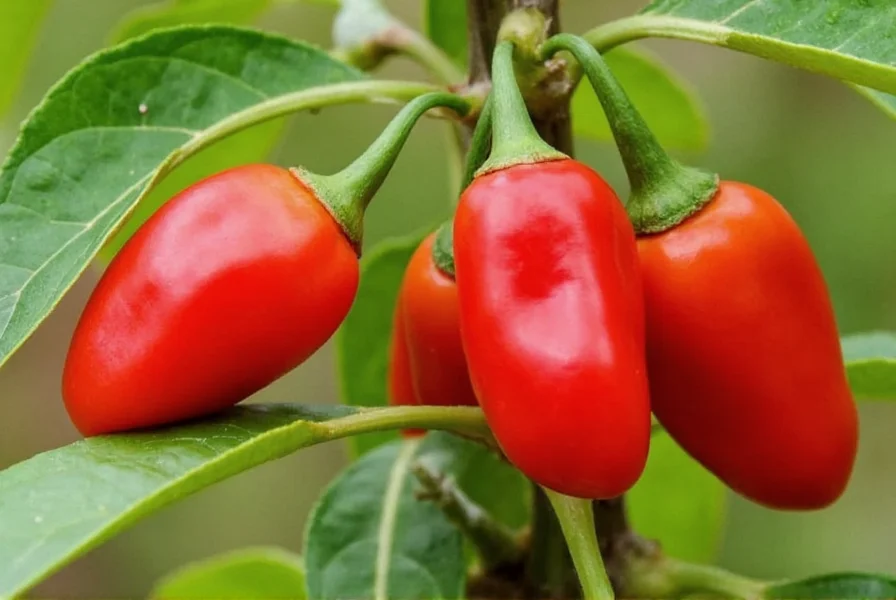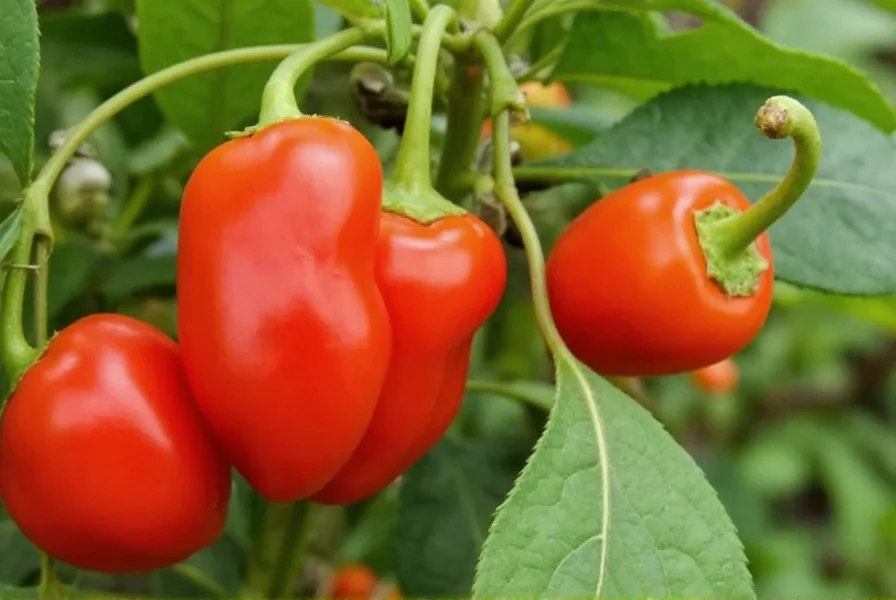The Scotch Bonnet chilli (Capsicum chinense) has become increasingly popular worldwide, yet many home cooks still wonder what is a scotch bonnet chilli exactly and how it differs from similar peppers. This comprehensive guide explores everything you need to know about this distinctive Caribbean staple, from its botanical origins to practical culinary applications.
Origins and History of Scotch Bonnet Peppers
Despite its name suggesting Scottish roots, the Scotch Bonnet actually originated in the Caribbean islands, particularly Jamaica, where it has been cultivated for centuries. The name likely derives from its resemblance to traditional Scottish bonnet hats. Indigenous Taino people first cultivated this pepper long before European colonization. Unlike many commercial peppers, Scotch Bonnets developed naturally in tropical climates rather than through selective breeding programs.
Historically, Caribbean communities used Scotch Bonnets not only for culinary purposes but also in traditional medicine and preservation techniques. The pepper's natural antimicrobial properties helped preserve foods in the region's hot climate long before refrigeration existed.

Physical Characteristics and Varieties
Scotch Bonnet peppers typically measure 1-2 inches in diameter with a distinctive squat, rounded shape that resembles a Scottish tam-o'-shanter cap—hence the name. They feature deeply furrowed, crinkled skin and usually grow in clusters. While most commonly associated with bright orange or red colors when mature, they can also appear in yellow, brown, or even chocolate hues depending on the variety.
Unlike the smoother-skinned habanero, Scotch Bonnets have more pronounced wrinkles and a slightly squatter appearance. The stem attachment creates a distinctive 'bonnet' shape that separates it from similar peppers. When selecting Scotch Bonnets, look for firm, glossy specimens without wrinkles or soft spots, which indicate aging.
Heat Level and Scoville Scale Comparison
Understanding how hot is a scotch bonnet chilli requires examining its position on the Scoville scale. These peppers typically register between 100,000-350,000 Scoville Heat Units (SHU), placing them firmly in the 'very hot' category. For context, this makes them approximately 40-100 times hotter than a standard jalapeño.
| Pepper Variety | Scoville Heat Units | Heat Comparison |
|---|---|---|
| Scotch Bonnet | 100,000-350,000 | Reference point |
| Habanero | 100,000-350,000 | Nearly identical heat range |
| Jalapeño | 2,500-8,000 | 12-40x milder |
| Ghost Pepper | 855,000-1,041,427 | 2-8x hotter |
Interestingly, the heat level can vary significantly based on growing conditions, with peppers from hotter, drier climates generally developing higher capsaicin concentrations. The heat distribution isn't uniform either—the placenta (white ribs inside) contains the highest concentration of capsaicin, while the flesh has comparatively less.
Flavor Profile Beyond the Heat
While many focus solely on what is a scotch bonnet chilli in terms of heat, its complex flavor profile deserves equal attention. These peppers offer a distinctive fruity, slightly sweet taste with tropical notes of apricot, citrus, and sometimes even apple. This nuanced flavor makes them particularly valuable in Caribbean cooking, where they contribute more than just heat.
The flavor develops as the pepper matures from green to its final vibrant color. Green Scotch Bonnets have a grassier, more vegetal flavor, while fully ripened orange or red varieties develop their characteristic sweetness. This flavor complexity explains why chefs often prefer Scotch Bonnets over other hot peppers for certain applications—they add dimension rather than just heat.
Culinary Applications Around the World
Understanding scotch bonnet pepper uses in cooking reveals why this pepper has become indispensable in certain cuisines. In Jamaica, it's the essential ingredient in authentic jerk seasoning, providing both heat and fruity complexity. Caribbean hot sauces like Jamaican 'pepper sauce' rely on Scotch Bonnets for their distinctive flavor.
Beyond the Caribbean, chefs worldwide incorporate Scotch Bonnets into:
- Salsas and chutneys where fruitiness complements tomatoes
- Marinades for meats, particularly chicken and pork
- Seafood dishes where the citrus notes enhance ocean flavors
- Fruit-based hot sauces that highlight the pepper's natural sweetness
- Traditional Caribbean rice and peas
When cooking with Scotch Bonnets, remember that heat intensifies during cooking but mellows with prolonged simmering. For safety, always wear gloves when handling and avoid touching your face. Remove seeds and white membranes for reduced heat while retaining flavor.

Growing Scotch Bonnet Peppers
For gardeners interested in growing scotch bonnet peppers at home, these plants require warm temperatures (70-90°F), full sun, and well-draining soil. They typically take 90-120 days from seed to harvest. Unlike some commercial peppers, Scotch Bonnets thrive in humid conditions similar to their native Caribbean environment.
Start seeds indoors 8-10 weeks before the last frost date. Transplant outdoors when soil temperatures consistently exceed 60°F. Provide consistent moisture but avoid overwatering, which can cause root rot. The plants typically grow 2-3 feet tall and produce peppers continuously throughout the growing season.
Finding and Storing Scotch Bonnet Chillies
Locating authentic peppers when you're trying to figure out where to buy scotch bonnet chillies can be challenging outside Caribbean communities. Check:
- Caribbean or Latin American grocery stores (most reliable source)
- Specialty farmers' markets during peak season (summer-fall)
- Some larger supermarket chains in produce sections
- Online retailers that ship fresh peppers
When storing fresh Scotch Bonnets, keep them in a paper bag in the refrigerator's crisper drawer for up to 2 weeks. For longer preservation, freeze whole peppers in airtight containers (they'll soften but retain flavor) or make hot sauce or infused oils. Drying Scotch Bonnets creates potent flakes that maintain heat for months.
Substituting Scotch Bonnet Peppers
If you're searching for a scotch bonnet chilli substitute, consider these options based on what aspect you need to replicate:
- For heat only: Habanero (nearly identical heat profile)
- For heat and fruitiness: Fatalii or Trinidad Scorpion (more heat)
- Milder alternative: Serrano with a touch of mango or apricot
- Non-spicy flavor substitute: Bell pepper with citrus zest
When substituting, remember that scotch bonnet chilli vs habanero differences are subtle—many experts consider them virtually identical in heat, though habaneros often have a slightly more floral aroma while Scotch Bonnets lean toward tropical fruit notes.
Safety Considerations
Handling extremely hot peppers requires caution. Always wear disposable gloves when preparing Scotch Bonnets and avoid touching your face. If capsaicin contacts skin, wash with soap and cool water—avoid hot water which opens pores. For eye contact, flush with milk or specialized pepper spray remedies.
When cooking, start with small amounts and taste carefully. The heat builds gradually, so it's easy to over-season. Remember that cooking doesn't eliminate capsaicin—it redistributes it throughout the dish. If a dish becomes too spicy, add dairy (yogurt, sour cream), acid (lime juice), or sweetness (honey) to balance the heat.
Frequently Asked Questions
Are Scotch Bonnet peppers the same as habaneros?
Scotch Bonnets and habaneros belong to the same species (Capsicum chinense) and have nearly identical heat levels (100,000-350,000 SHU), but they differ in shape and flavor. Scotch Bonnets have a distinctive squat, rounded shape with deep wrinkles and a more pronounced fruity, tropical flavor profile compared to habaneros' slightly floral notes. The shape difference is the most reliable visual identifier—Scotch Bonnets resemble a Scottish bonnet while habaneros are more oval.
How can I reduce the heat of Scotch Bonnet peppers in cooking?
To reduce heat while preserving flavor, remove the white placenta and seeds where capsaicin concentrates. Soaking sliced peppers in vinegar or citrus juice for 15-20 minutes before use can also mellow the heat. When cooking, add dairy products like coconut milk or yogurt which bind to capsaicin. Remember that heat intensifies initially during cooking but mellow slightly with prolonged simmering. Start with half a pepper for a dish serving four people, then adjust to taste.
Can I grow Scotch Bonnet peppers outside the Caribbean?
Yes, you can successfully grow Scotch Bonnet peppers in temperate climates with proper care. They require 90-120 frost-free days, temperatures between 70-90°F, and high humidity. Start seeds indoors 8-10 weeks before last frost, use well-draining soil, and provide 6-8 hours of direct sunlight daily. In cooler climates, grow in containers that can be moved indoors during temperature drops. While yields may be lower than in tropical regions, home gardeners worldwide successfully cultivate Scotch Bonnets with attention to their warmth and moisture needs.
What makes Scotch Bonnet peppers different nutritionally?
Like other chili peppers, Scotch Bonnets are rich in vitamin C (more than oranges by weight), vitamin A, and capsaicin—which has anti-inflammatory properties. Their distinctive nutritional advantage comes from higher concentrations of certain carotenoids that develop in tropical growing conditions, contributing to their vibrant orange and red colors. These compounds act as antioxidants. The fruitiness also indicates higher natural sugar content compared to many other hot peppers, which balances their heat. All chili peppers contain negligible calories while providing significant micronutrients.











 浙公网安备
33010002000092号
浙公网安备
33010002000092号 浙B2-20120091-4
浙B2-20120091-4